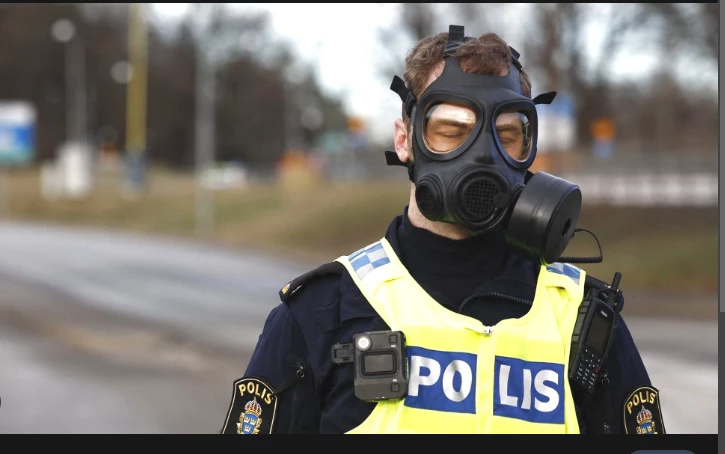Eight in hospital after reports of 'odour' at Sweden intel service

Stay tuned with 24 News HD Android App

Police opened an investigation Friday after a suspicious odour at Sweden's Security Service office left eight people needing hospital treatment with respiratory symptoms.
Images from the scene showed police wearing gas masks alongside several ambulances and emergency vehicles as an area around the office of the agency, known as Sapo, was closed off.
"Around 1:00 pm today, there were indications that there was a dangerous substance at Sapo's offices," Patrik Soderberg, chief physician at the local healthcare authority Region Stockholm, told AFP.
"A total of eight people with symptoms have been treated at hospital," Region Stockholm said in a statement, adding that the "cause of the leak was still unclear."
After ending their emergency operation, police said they had started an investigation into "causing bodily harm" but did not have any suspects.
Police said an area of "a couple of hundred meters" around the building had been closed off after "a potential gas leak".
Some of those taken to hospital were officers who had "smelled an odour when they arrived", the service added in a statement.
Sapo spokeswoman Karin Lutz told AFP the intelligence agency had called emergency services after receiving an alarm.
Lutz said the building had been "partly evacuated" during the emergency but declined to give further details or comment on whether they suspected foul play.
In a later statement, Sapo said "emergency services ended the operation after confirming that there was no gas inside the premises or outside the building."
The Nordic country is on high alert as it is expecting to clear the final hurdle to its bid to join NATO on Monday, with the last holdout Hungary scheduled to vote on ratifying its membership.
The Aftonbladet newspaper said witnesses had reported smelling something that reminded them of paint, and that locals had been told to close their windows.
Swedish media also reported that a gas sensor on the roof of the building had alerted the presence of phosgene, but these reports have not been confirmed.
The gas was used as a chemical warfare agent during World War I, but is also widely used in industry for the production of plastics and pesticide.
